Ribosomal and hematopoietic defects in induced pluripotent stem cells derived from Diamond Blackfan anemia patients
- PMID: 23744582
- PMCID: PMC3739037
- DOI: 10.1182/blood-2013-01-478321
Ribosomal and hematopoietic defects in induced pluripotent stem cells derived from Diamond Blackfan anemia patients
Abstract
Diamond Blackfan anemia (DBA) is a congenital disorder with erythroid (Ery) hypoplasia and tissue morphogenic abnormalities. Most DBA cases are caused by heterozygous null mutations in genes encoding ribosomal proteins. Understanding how haploinsufficiency of these ubiquitous proteins causes DBA is hampered by limited availability of tissues from affected patients. We generated induced pluripotent stem cells (iPSCs) from fibroblasts of DBA patients carrying mutations in RPS19 and RPL5. Compared with controls, DBA fibroblasts formed iPSCs inefficiently, although we obtained 1 stable clone from each fibroblast line. RPS19-mutated iPSCs exhibited defects in 40S (small) ribosomal subunit assembly and production of 18S ribosomal RNA (rRNA). Upon induced differentiation, the mutant clone exhibited globally impaired hematopoiesis, with the Ery lineage affected most profoundly. RPL5-mutated iPSCs exhibited defective 60S (large) ribosomal subunit assembly, accumulation of 12S pre-rRNA, and impaired erythropoiesis. In both mutant iPSC lines, genetic correction of ribosomal protein deficiency via complementary DNA transfer into the "safe harbor" AAVS1 locus alleviated abnormalities in ribosome biogenesis and hematopoiesis. Our studies show that pathological features of DBA are recapitulated by iPSCs, provide a renewable source of cells to model various tissue defects, and demonstrate proof of principle for genetic correction strategies in patient stem cells.
Figures

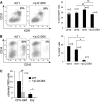
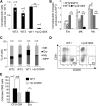

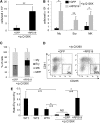
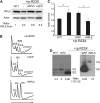
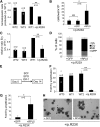
Comment in
-
Defects in DBA: more than meets the eye.Blood. 2013 Aug 8;122(6):856-7. doi: 10.1182/blood-2013-06-508465. Blood. 2013. PMID: 23929834
Similar articles
-
Cells depleted for RPS19, a protein associated with Diamond Blackfan Anemia, show defects in 18S ribosomal RNA synthesis and small ribosomal subunit production.Blood Cells Mol Dis. 2007 Jul-Aug;39(1):35-43. doi: 10.1016/j.bcmd.2007.02.001. Epub 2007 Mar 21. Blood Cells Mol Dis. 2007. PMID: 17376718
-
Eltrombopag Improves Erythroid Differentiation in a Human Induced Pluripotent Stem Cell Model of Diamond Blackfan Anemia.Cells. 2021 Mar 26;10(4):734. doi: 10.3390/cells10040734. Cells. 2021. PMID: 33810313 Free PMC article.
-
Impaired ribosome biogenesis in Diamond-Blackfan anemia.Blood. 2007 Feb 1;109(3):1275-83. doi: 10.1182/blood-2006-07-038372. Epub 2006 Oct 19. Blood. 2007. PMID: 17053056 Free PMC article.
-
[Diamond-Blackfan anemia reveals the dark side of ribosome biogenesis].Med Sci (Paris). 2009 Jan;25(1):69-76. doi: 10.1051/medsci/200925169. Med Sci (Paris). 2009. PMID: 19154697 Review. French.
-
Diamond Blackfan anemia: ribosomal proteins going rogue.Semin Hematol. 2011 Apr;48(2):89-96. doi: 10.1053/j.seminhematol.2011.02.005. Semin Hematol. 2011. PMID: 21435505 Review.
Cited by
-
Gene editing of PKLR gene in human hematopoietic progenitors through 5' and 3' UTR modified TALEN mRNA.PLoS One. 2019 Oct 16;14(10):e0223775. doi: 10.1371/journal.pone.0223775. eCollection 2019. PLoS One. 2019. PMID: 31618280 Free PMC article.
-
Emerging Therapeutic Approaches for Diamond Blackfan Anemia.Curr Gene Ther. 2018;18(6):327-335. doi: 10.2174/1566523218666181109124538. Curr Gene Ther. 2018. PMID: 30411682 Free PMC article. Review.
-
Proerythroblast Cells of Diamond-Blackfan Anemia Patients With RPS19 and CECR1 Mutations Have Similar Transcriptomic Signature.Front Physiol. 2021 Jun 11;12:679919. doi: 10.3389/fphys.2021.679919. eCollection 2021. Front Physiol. 2021. PMID: 34177624 Free PMC article.
-
Patient-Specific iPSC-Derived Endothelial Cells Provide Long-Term Phenotypic Correction of Hemophilia A.Stem Cell Reports. 2018 Dec 11;11(6):1391-1406. doi: 10.1016/j.stemcr.2018.10.012. Epub 2018 Nov 8. Stem Cell Reports. 2018. PMID: 30416049 Free PMC article.
-
Induction of multipotential hematopoietic progenitors from human pluripotent stem cells via respecification of lineage-restricted precursors.Cell Stem Cell. 2013 Oct 3;13(4):459-70. doi: 10.1016/j.stem.2013.09.002. Cell Stem Cell. 2013. PMID: 24094326 Free PMC article.
References
-
- Ball S. Diamond Blackfan anemia. Hematology Am Soc Hematol Educ Program. 2011;2011:487-491. - PubMed
-
- Gazda HT, Zhong R, Long L, et al. RNA and protein evidence for haplo-insufficiency in Diamond-Blackfan anaemia patients with RPS19 mutations. Br J Haematol. 2004;127(1):105–113. - PubMed
-
- Ellis SR, Gleizes PE. Diamond Blackfan anemia: ribosomal proteins going rogue. Semin Hematol. 2011;48(2):89–96. - PubMed
Publication types
MeSH terms
Substances
Grants and funding
LinkOut - more resources
Full Text Sources
Other Literature Sources
Miscellaneous

